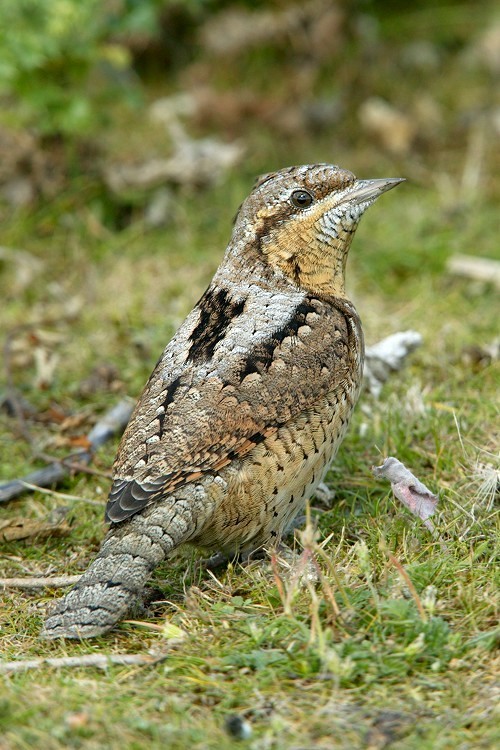- Jynx torquilla
Identification
Plumage is mostly grey and brown with darker streaks
Distribution
Breeds widely across Europe from northern Iberia and western France east to the Urals, Caspian and north Caucasus and across temperate Asia to China and northern Japan. In the north virtually absent from British Isles but breeds over most of Scandinavia except the higher mountains and the far north, and across Russia south of 650N. Breeds south to the northern coast of the Mediterranean from north-east Spain to northern Greece and on Mallorca, Ibiza, Corsica, Sardinia and Sicily. Also breeds sparingly in southern Portugal and in north Algeria.
Mainly a summer visitor but in the far south of range may be partially migratory or resident. Main autumn passage period is August-October, the return in April-May. Passage birds occur throughout Europe, North Africa, the Middle East and southern Asia. Winters in tropical Africa, India, South-East Asia, southern China and southern Japan.
Formerly a regular and fairly widespread breeder in Britain, now mainly a scarce passage migrant with 200-400 birds per year, mainly in August-October, with occasional summering birds and sporadic breeding records. Similar declines have been seen elsewhere in Europe, particularly in northern France and in North Sea countries.
Accidental vagrant to Alaska (two records).
Taxonomy
Subspecies[1]
There are 4 subspecies:
- J. t. torquilla:
- J. t. tschusii:
- J. t. mauretanica:
- Northwest Africa
- J. t. himalayana:
In addition 3 further subspecies sarudnyi, chinensis and japonica are recognised by some authorities[2]
Habitat
Open woodland, deciduous or mixed, clearings and edges of forest, orchards, parks and large gardens. Nest in a tree-hole. Occurs in a range of more open habitats on passage including cultivated areas, close-cropped grassland, sand-dunes and shingle beaches.
Behaviour
Diet
Mainly insects and ants.
Breeding
They will use old woodpecker holes and wood piles to lay their white eggs.
Vocalisation
<flashmp3>Jynx torquilla (song).mp3</flashmp3>
Listen in an external program
References
- Clements, JF. 2008. The Clements Checklist of Birds of the World. 6th ed., with updates to December 2008. Ithaca: Cornell Univ. Press. ISBN 978-0801445019.
- Wikipedia
- Woodpeckers of Europe: A Study of the European Picidae. Gerard Gorman. ISBN 1-872842-05-4
Recommended Citation
- BirdForum Opus contributors. (2024) Eurasian Wryneck. In: BirdForum, the forum for wild birds and birding. Retrieved 3 May 2024 from https://www.birdforum.net/opus/Eurasian_Wryneck
External Links




